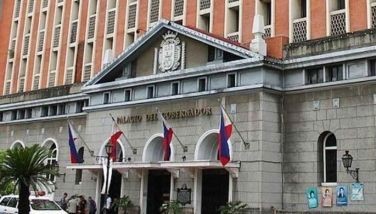'Spratly corals in various stages of degradation'
LOS BAÑOS, Laguna, Philippines – The coral reefs in the Spratly Islands in the West Philippine Sea are now in various stages of degradation, a group of researchers said.
“Dead standing coral structures are a common sight underwater, most likely the effect of the use of chemicals while fishing,” said a study the Western Philippines University-College of Fisheries and Marine Technology in Puerto Princesa City, Palawan.
The researchers said the outbreak of crown thorns, a form of starfish, in the reefs of Pag-asa Island further aggravates the poor condition of the corals.
“There were also reports on gathering of coral boulders by foreign fishing beats from the reefs of the Kalayaan Island Group,” said the report made by researchers Benjamin Gonzales, Joel Becira, Honorio Paglinawan, Ria Sariago, Edwin Rodriguez, Bernaldo Montaño, Noli Dieron and Johanne Gonzales.
The group was commissioned by the town of Kalayaan to provide baseline information of the present state of Pag-asa Island’s resources, particularly marine, give recommendations for their sustainable use and recommend eco-tourism and livelihood activities for the island.
The island group has been the subject of territorial disputes among countries that include the Philippines, China and Vietnam.
Reportedly rich in oil reserves, the area is named differently by the claimants – Kalayaan Island Group by the Philippines and Nansha by China, among them.
Their research, entitled “The Pag-asa Island (Spratlys): Challenges and Opportunities,” was among the winners in the National Aquatic Resources Research and Development System.
The study noted that only one of the island’s 10 stations had good coral cover at 50.50 percent. Four stations had fair coral cover (27.84 percent) and the rest had poor cover (less than 25 percent)
“More than 50 percent of the benthic (bottom) cover in most of the stations was composed of dead corals,” the researchers reported.
They said Pag-asa Island’s low coral cover might be the result of the destructive fishing methods used in the vicinity, as observed by the islanders and local fishermen.
The bright side, though, is that although the signs of the corals’ degradation are clear, the area is still rich in marine resources.
“The Pag-asa Island, in particular, and Kalayaan Island Group, in general, have high capacity to support fishery with significant importance as source of food and economic potentials for adjacent countries and the whole Southeast Asia,” the researchers stressed.
Recorded in the 10 stations were 251 fish species, 141 of which are commercially valuable.
There are eight kinds of macro-invertebrates – giant clams, sea cucumbers, lobsters, topshells, sipunculids, crown of thorns, sea urchins, and other starfish.
“All the invertebrates, except the crown of thorns, are worth conserving and protecting for food, livelihood and eco-tourism purposes, thus, these resources should be properly managed,” the researchers recommended.
The researchers also noted that there are still no facilities to store fish catch and regular transportation available on the island.
Fish being dried are the high-value ones.
Emphasizing the urgency of properly managing Pag-asa Island and Kalayaan Island group marine resources, the researchers said claimant countries in the region should come to terms on how they could jointly protect and manage the area for sustainable development before the vast coral reef resources deteriorate.
- Latest
- Trending






























